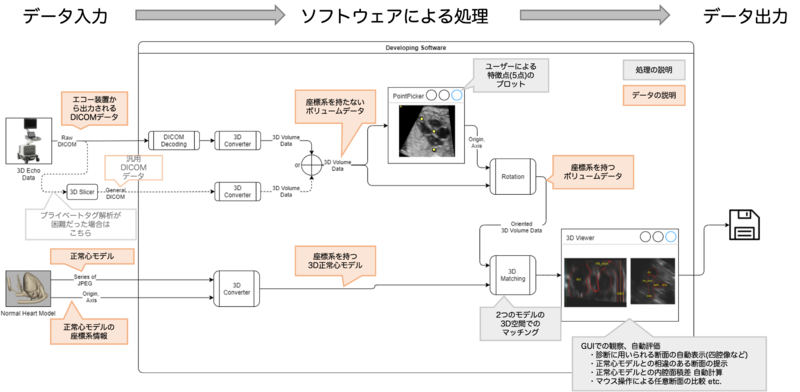Interviews

Interviewer & Japanese Writer: Yamamoto Takaya; Translation & Editing: Matthew Cherry
Dr. Shinji Fuke worked hard throughout both the 2018 and 2021 INNO-vation Program’s Disruptive Challenge to progress his research into detecting Congenital Heart Disease (CHD) before birth. Although he’s still working on that same research today, he states that his research as an obstetrician-gynecologist is shifting focus to a fetal heart monitor that can measure blood pressure.
Cerebral palsy affects thousands of newborn children every year. One of the causes of cerebral palsy is believed to be low blood pressure during the fetal stages. Conventional medical science allows for heartbeat monitoring in fetuses, but this monitoring hasn’t led to a decrease in cases of cerebral palsy. Monitoring a heartbeat doesn’t always lead to information about blood pressure, so it remains difficult to detect cases using this method.
“If you want to use an ultrasound to calculate the pressurized energy exerted by a heart, it’s necessary to know the fluctuations in the heart’s volume as well as the speed of the blood flow,” Dr. Fuke explained. “If we use the 3DCG model I created, changes in a given heart’s volume can be clearly observed. Now we just need a way to calculate the speed of blood flow. Knowing that would allow us to understand the level of energy a heartbeat is exerting. The day when we’ll be able to calculate this data will surely come.”
That being said, Dr. Fuke realizes that it’s going to take some time. “I don’t think it’s something that’ll be realized in my lifetime,” he noted. “What I can do is open that first door for what will come around in 20 or 30 years. I believe if we can understand that the most difficult cases [of heart disease] to work with are with fetal hearts – not adults – then that will help bring about the person who can finish this research.”
Dr. Fuke plans to continue his own research while working day-to-day as an OB-GYN. He also mentioned that he’s filed for a patent on his work.

Dr. Fuke’s patent (Japan Patent 6874199) Cardiac Model Introduction Equipment, Cardiac Diagnosis Support System Program, and Cardiac Model Installation Method
“I have plenty of experience when it comes to ultrasound technology and sonograms as well as knowledge surrounding 3D ultrasounds. I believe only clinical physicians that possess such knowledge can be truly passionate about this kind of research. To me, it’s more of a hobby than my work. When I was a kid, I loved walking in the fresh snow, particularly where there weren’t any footprints yet. I’m most happy when I’m doing something that nobody else in the world has done before, something only I know about,” Dr. Fuke said. Going forward, he’ll continue to set foot into uncharted territory as he moves his research toward the early detection and treatment of cerebral palsy.

